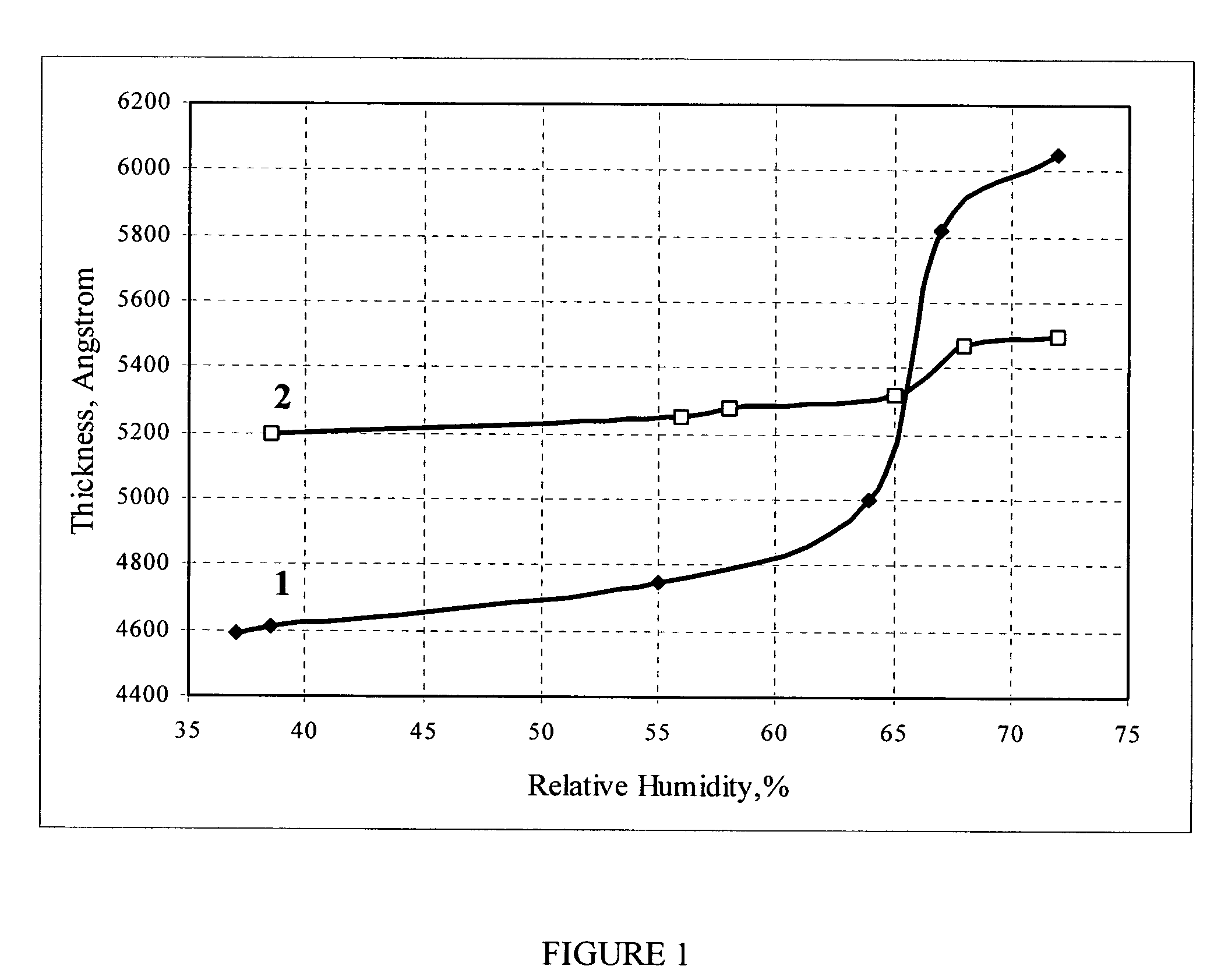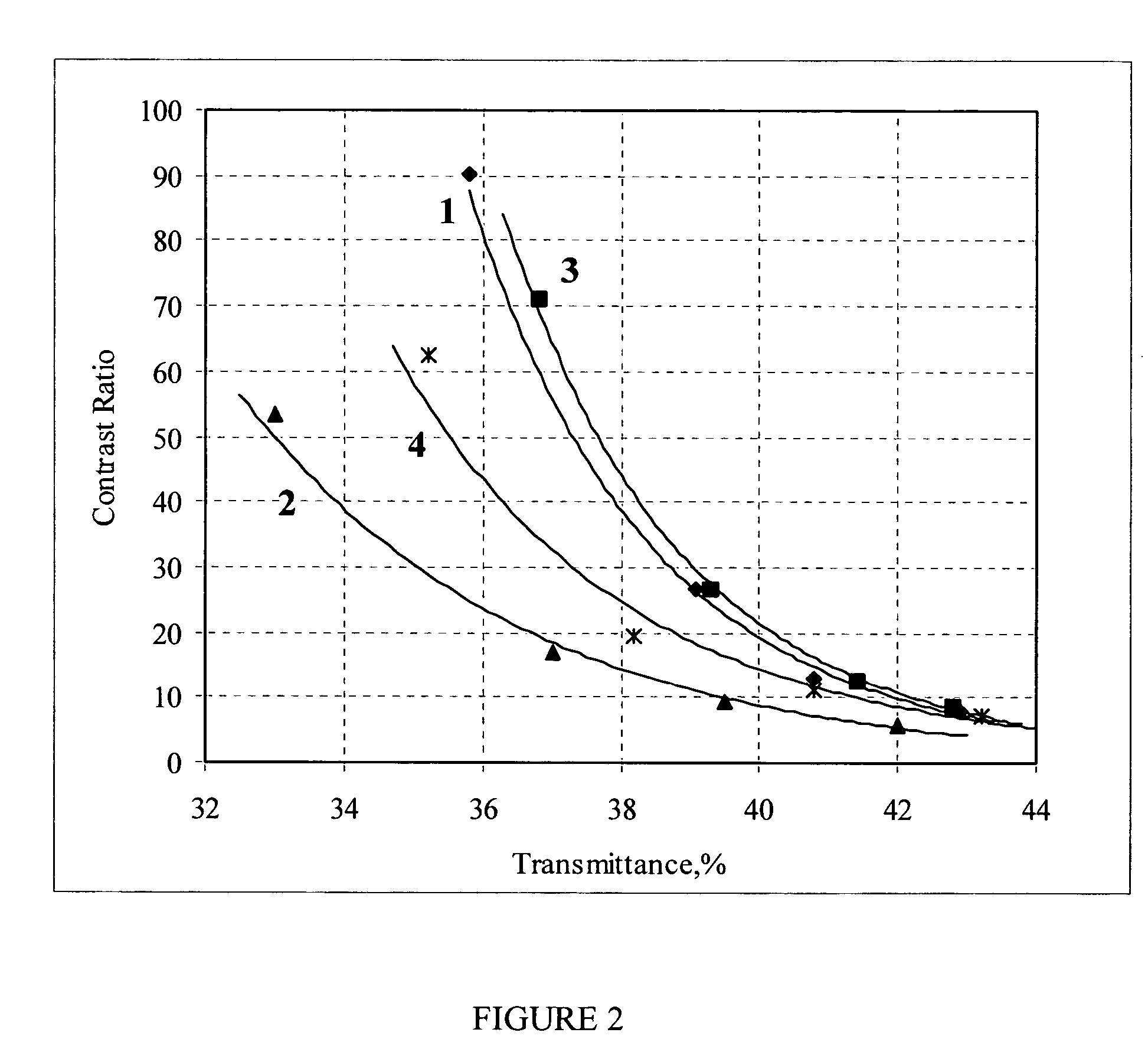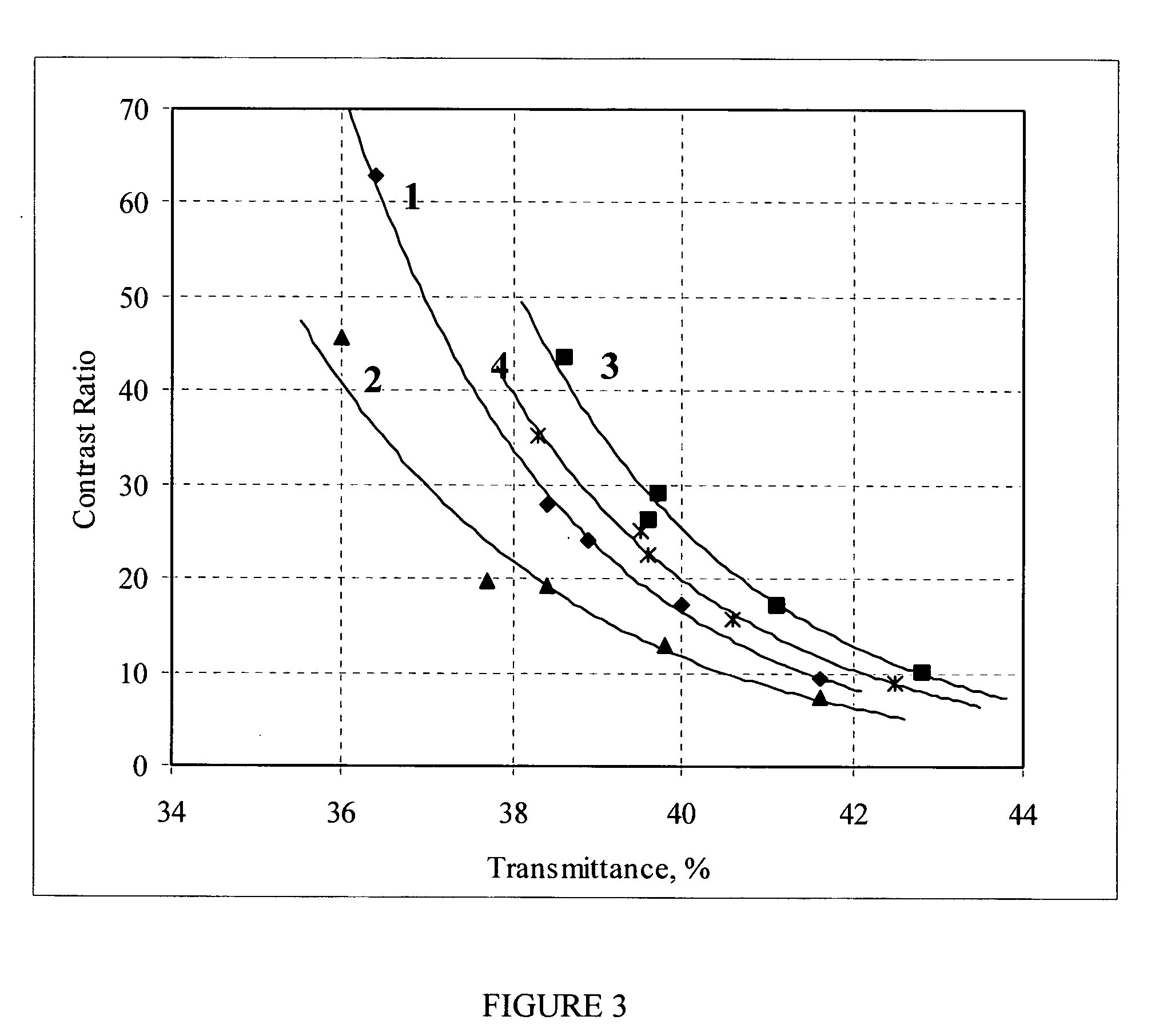Supramolecular composite film material and method for fabricating
a composite film and polymerization process technology, applied in the field of crystalline composite film materials, can solve the problems of low thermal stability, limited application, and complicated technology of the above-mentioned polymerization process, and achieve the effect of improving working characteristics
- Summary
- Abstract
- Description
- Claims
- Application Information
AI Technical Summary
Benefits of technology
Problems solved by technology
Method used
Image
Examples
example 1
[0073] A supramolecular composite film material was prepared as follows. An aqueous solution of the mixture of organic compound including sulfonated derivatives of indanthrone, naphthalenetetracarboxylic acid and perylenetetracarboxylic acid (INP) with a total concentration of 5% was evaporated using a rotor evaporator to a dye concentration (10-16%) ensuring the formation of a lyotropic liquid crystal phase. Then, surfactant Triton X-100 was added into the solution in order to improve wetting of the substrate surface. The resulting working concentration of the “black” ink was 13%.
[0074] The ink was applied onto the surface of a glass substrate with simultaneous orientation using a Mayer rod as the aligning instrument. The film application was performed at 20° C. and RH=65-70%. After drying under the same conditions, the TCF was converted into the water-insoluble form (Ba-form) by dipping for 1-2 s into a 10% aqueous solution of barium chloride (BaCl2). Then, the sample was lifted ...
example 2
[0080] The samples of TCFs on glass substrates were prepared from 11.5% ink using a Mayer rod as the aligning instrument. The ink was applied at 20° C. and RH=65-70%. After drying under the same conditions, the TCF was converted into the water-insoluble form (Ba-form) by dipping for 1-2 s into a 10% aqueous solution of barium chloride (BaCl2). Then, the sample was lifted up in a vertical position, washed with DI water and dried with air knife.
[0081] The optical characteristics of these TCFs (control samples) measured in air at room temperature and a relative humidity RH=45% are presented in Table 4.
TABLE 4Polarizing parameters and color coordinates of TCF based on 11.5% ink (controlsamples) measured before bakingColor coordinatesTwoTransmittance, %SingleparallelTwo crossed#TH0H90EpCRΔ(CR)KdababAb141.631.33.389.89.40.113.41.09−3.94−2.071.6513.86−29.81240.030.21.794.417.40.215.1−0.10−2.36−3.543.0714.99−31.92338.929.01.295.924.10.415.2−0.30−1.48−3.373.4214.79−30.56438.428.41.096.527...
example 3
[0085] The samples of TCFs on glass substrates were prepared from 12% ink using a Mayer rod as the aligning instrument. The ink was applied at 20° C. and RH=65-70%. After drying under the same conditions, the TCF was converted into the water-insoluble form (Ba-form) by dipping for 1-2 s into a 10% aqueous solution of barium chloride (BaCl2). Then, the sample was lifted up in a vertical position, washed with DI water and dried with air knife.
[0086] The optical characteristics of these TCFs (control samples) measured in air at room temperature and a relative humidity RH=45% are presented in Table 7.
TABLE 7Polarizing parameters and color coordinates of TCF based on 12% ink (controlsamples) measured before environmental testColor coordinatesTwoTransmittance, %SingleparallelTwo crossed#TH0H90EpCRΔ(CR)KdabAbAb140.830.72.592.012.10.114.00.47−3.28−2.521.7812.84−28.90240.831.02.392.913.70.214.80.07−2.82−3.122.3412.96−29.27338.028.10.897.234.60.715.7−0.73−0.53−3.493.9213.74−29.11437.327.30...
PUM
 Login to View More
Login to View More Abstract
Description
Claims
Application Information
 Login to View More
Login to View More - R&D
- Intellectual Property
- Life Sciences
- Materials
- Tech Scout
- Unparalleled Data Quality
- Higher Quality Content
- 60% Fewer Hallucinations
Browse by: Latest US Patents, China's latest patents, Technical Efficacy Thesaurus, Application Domain, Technology Topic, Popular Technical Reports.
© 2025 PatSnap. All rights reserved.Legal|Privacy policy|Modern Slavery Act Transparency Statement|Sitemap|About US| Contact US: help@patsnap.com



